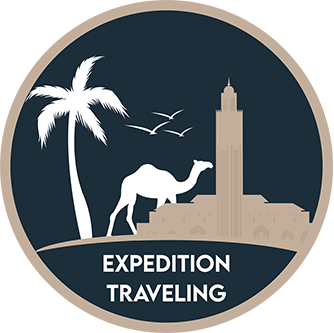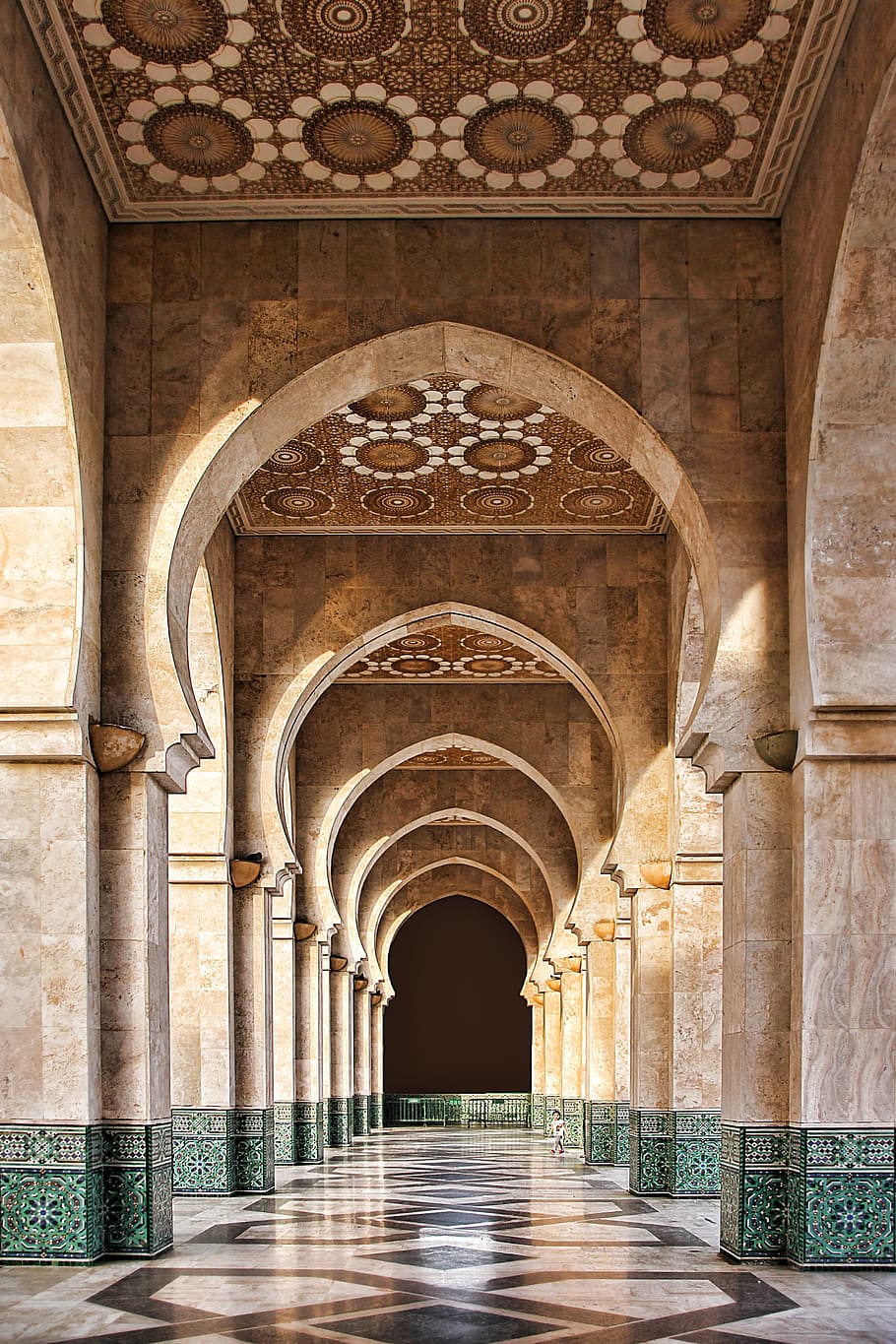Highlights of Morocco
Morocco is a land of diverse landscapes and rich culture. From the vibrant markets of Marrakech to the tranquil Atlas Mountains and the mystical Sahara Desert, each corner offers a unique experience. Discover ancient medinas, feast on flavorful tagines, and immerse yourself in the warm hospitality of the Moroccan people. Whether you seek adventure or relaxation, Morocco promises an unforgettable journey.
Morocco, Top Tourist Destination
Morocco offers diverse landscapes and rich culture. Explore Marrakech’s souks, the Atlas Mountains, and the Sahara Desert. With ancient medinas, flavorful cuisine, and warm hospitality, Morocco blends history, adventure, and charm.
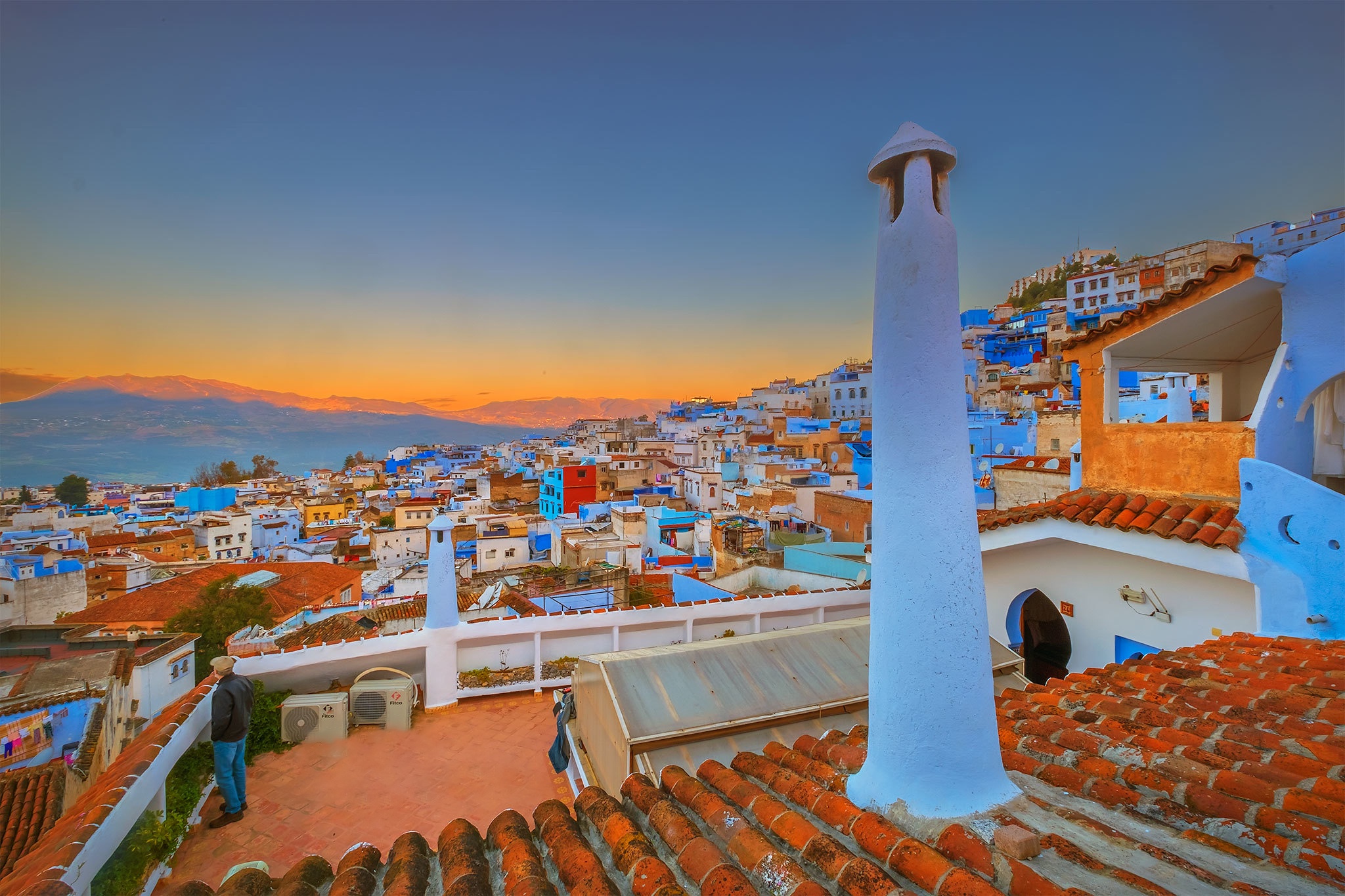
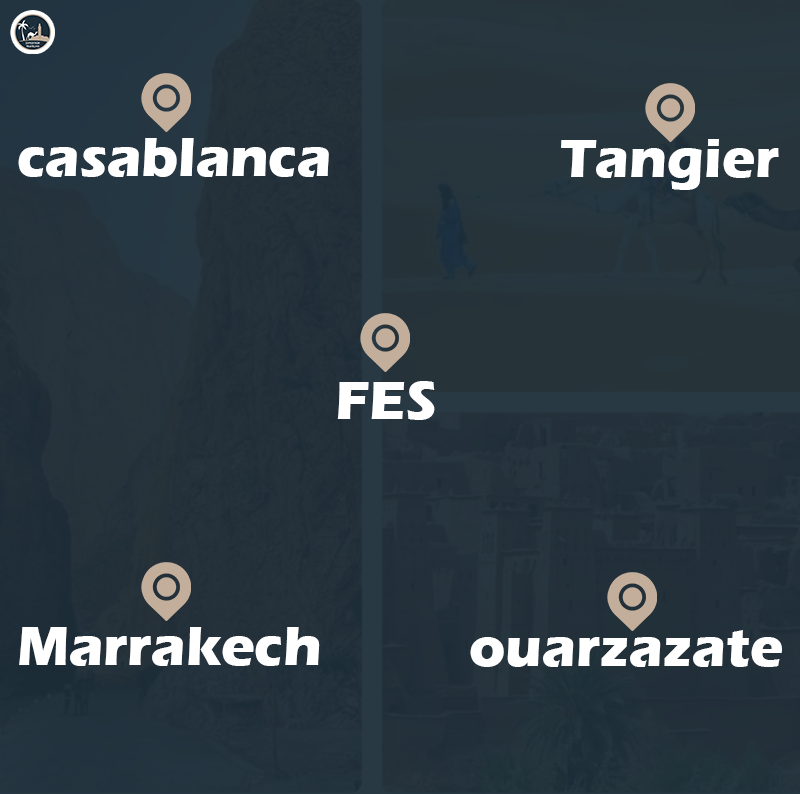
Our Private Tours
Top Selected Destination
Explore our exclusive private tours to top destinations across Morocco. Discover the cultural treasures and scenic beauty of Marrakech, Fes, Casablanca, Tangier, and Ouarzazate with personalized itineraries tailored to immerse you in the essence of each unique city
• From marrakech
• From fes
• From casablanca
• From tangier
• From ouarzazate
INFORMATION ABOUT MOROCCO TRAVEL
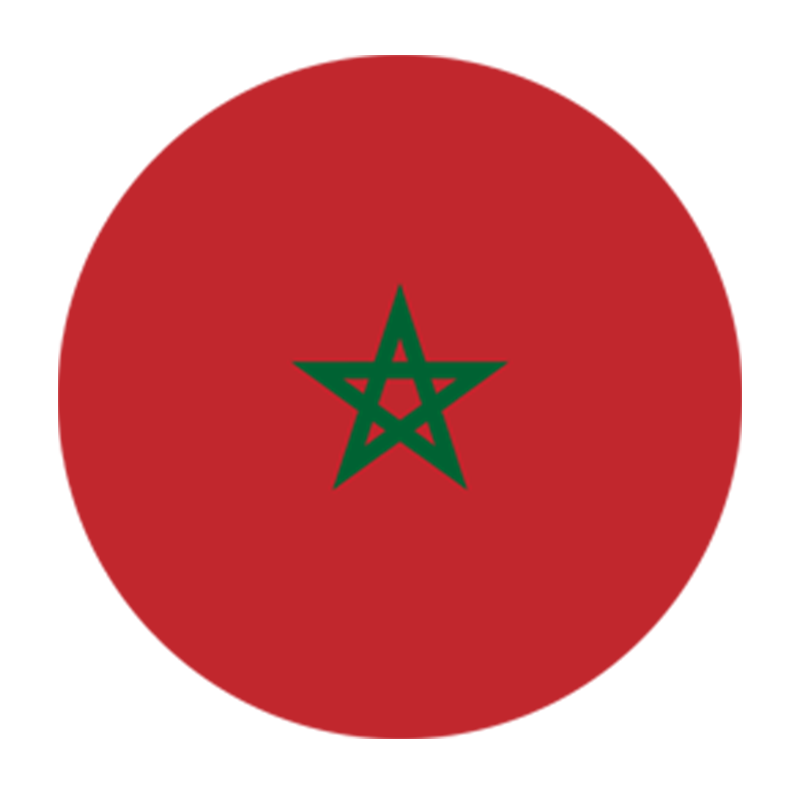
Morocco is one of the most diverse countries in Africa, offering a blend of high mountains, sweeping deserts, rugged coastline, and the labyrinthine alleyways of ancient medina cities and souqs.
Here, we will delve into some key information about Morocco: its rich cultural tapestry, vibrant culinary scene, architectural wonders like the Hassan II Mosque, and the warmth of its hospitable people. From the vibrant markets of Marrakech to the serene oases of the Sahara, Morocco promises a journey filled with unforgettable experiences and discoveries.
Morocco lies across the Strait of Gibraltar on the Mediterranean and looks out on the Atlantic from the northwest shoulder of Africa. Algeria is to the east and Mauritania to the south. The Mediterranean coast is mountainous. The Atlas Mountains, running northeastward from the south to the Algerian frontier, average 3,353 m in elevation.
Morocco has a population of over 33.8 million and an area of 446,550 km2. Its political capital is Rabat, although the largest city is Casablanca; other major cities include Marrakesh, Tangier, Tetouan, Salé, Fes, Agadir, Meknes, Oujda, Kenitra, and Nador. A historically prominent regional power, Morocco has a history of independence not shared by its neighbours. Its distinct culture is a blend of Arab, indigenous Berber, Sub-Saharan African, and European influences.
CLIMATE IN MOROCCO
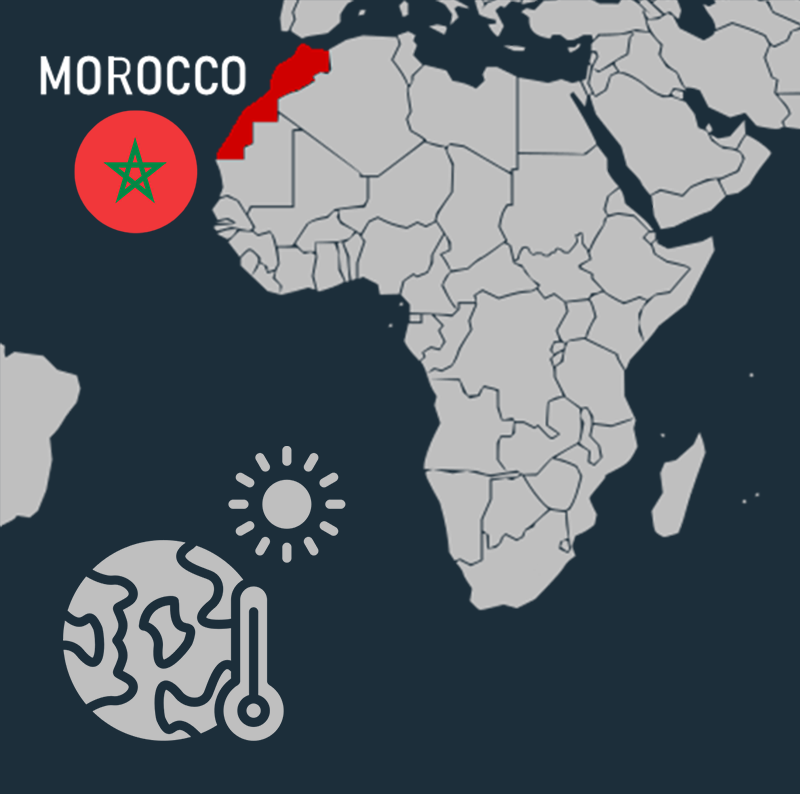
The country’s Mediterranean climate is similar to that of southern California, with lush forests in the northern and central mountain ranges of the country, giving way to dryer conditions and inland deserts further south east. The Moroccan coastal plains experience remarkably moderate temperatures even in summer, owing to the effect of the cold Canary Current off its Atlantic coast.
In general, apart from the South-east regions (pre-saharian and desert areas), Morocco’s climate and geography is pretty identical with the Iberian peninsula. Thus we have the following climate zones:
-
-
- Mediterranean: It dominates the coastal Mediterranean regions of the country, along the (500 km strip), and some parts of the Atlantic coast. Summers are hot to moderately hot and dry
- Sub-Mediterranean: it influences cities that show Mediterranean characteristics, but remain fairly influenced by other climates owing to their either relative elevation, or direct exposure to the North Atlantic Ocean
- Continental It dominates the mountainous regions of the north and central parts of the country
-
LANGUAGES IN MOROCCO
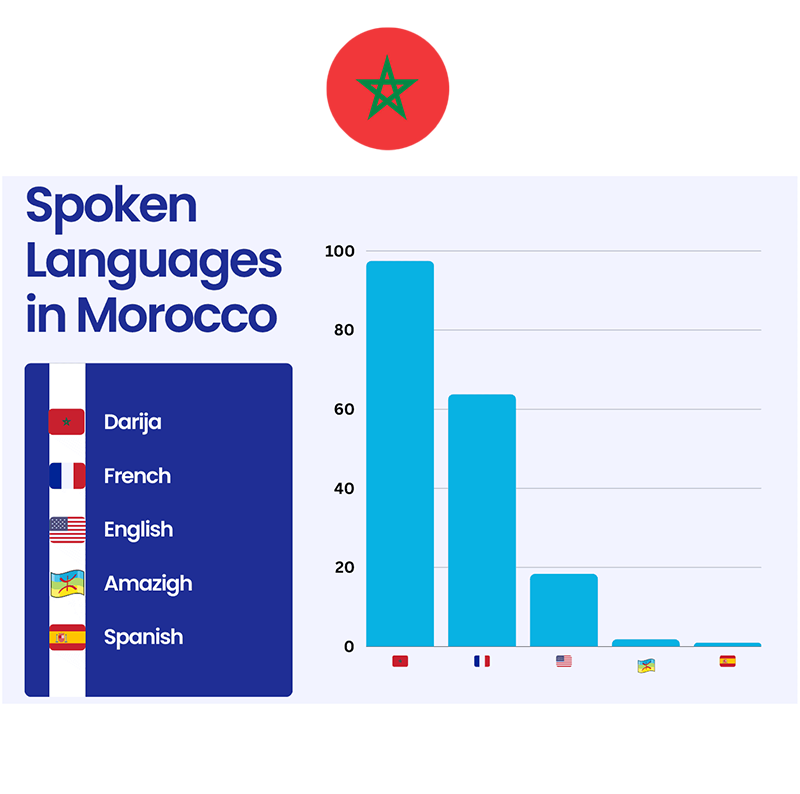
Morocco’s official languages are Arabic and Berber. The country’s distinctive group of Moroccan Arabic dialects is Darija. Approximately 89.8% of the whole population can communicate to some degree in Moroccan Arabic. The Berber language is spoken in three dialects (Tarifit, Tashelhit, and Central Atlas Tamazight).
French is widely used in governmental institutions, media, mid-size and large companies, international commerce with French-speaking countries, and often in international diplomacy.
In addition to Arabic, Berber, and French, Morocco’s linguistic landscape is further enriched by a significant usage of English, particularly in tourism, business, and education sectors. English proficiency has been steadily increasing, reflecting Morocco’s growing international engagement and appeal as a destination for travelers and investors alike.
The prominence of French in Morocco extends beyond governmental institutions and commerce to include education and cultural domains, where French-language literature, films, and academic pursuits play a significant role. This linguistic diversity not only reflects Morocco’s historical and cultural ties but also underscores its dynamic role in regional and global contexts. As Morocco continues to evolve, its multilingualism remains a cornerstone of its identity and a testament to its rich cultural heritage.
MUSIC IN MOROCCO
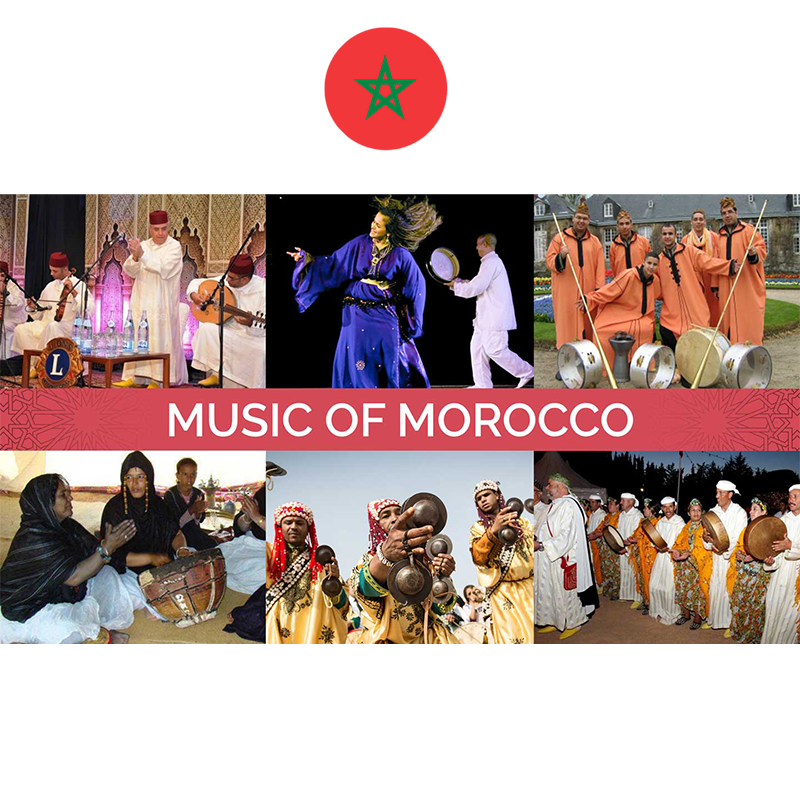
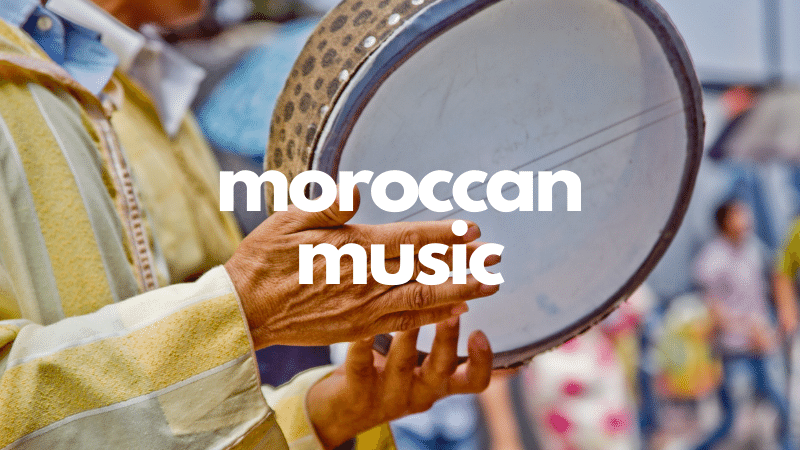
Moroccan music is of Amazigh, Arab and sub-Saharan origins. Rock-influenced chaabi bands are widespread, as is trance music with historical origins in Muslim music.
Morocco is home to Andalusian classical music that is found throughout North Africa. It probably evolved under the Moors in Cordoba, and the Persian-born musician Ziryab is usually credited with its invention. A genre known as Contemporary Andalusian Music and art is the brainchild of Morisco visual artist/composer/oudist Tarik Banzi, founder of the Al-Andalus Ensemble.
Chaabi (“popular”) is a music consisting of numerous varieties that are descended from the multifarious forms of Moroccan folk music. Chaabi was originally performed in markets but is now found at any celebration or meeting.
Andalusian classical music, a hallmark of Morocco’s cultural heritage, resonates throughout North Africa. Originating possibly under the Moors in Cordoba, its evolution is often credited to the Persian-born musician Ziryab. Contemporary Andalusian Music, a fusion of traditional elements with modern sensibilities, has been championed by figures like Tarik Banzi, a Morisco visual artist, composer, and oudist, known for founding the Al-Andalus Ensemble.
Chaabi, meaning “popular,” encompasses a wide range of styles descended from Morocco’s diverse folk music traditions. Initially performed in markets, chaabi has evolved into a staple of celebrations and gatherings across the country, reflecting the enduring vitality and adaptability of Moroccan musical expression
MOROCCAN CUISINE
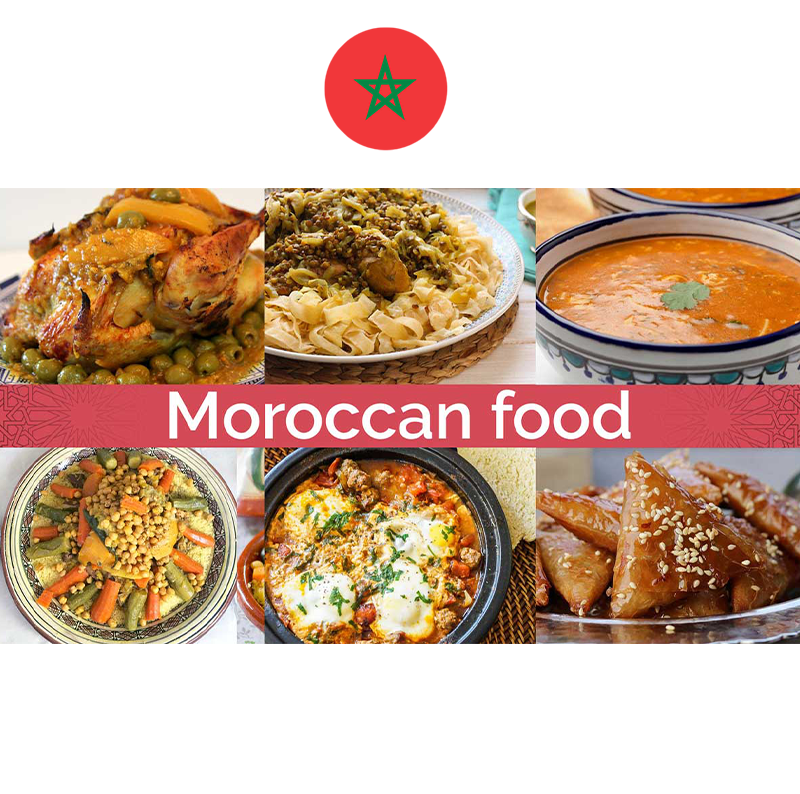
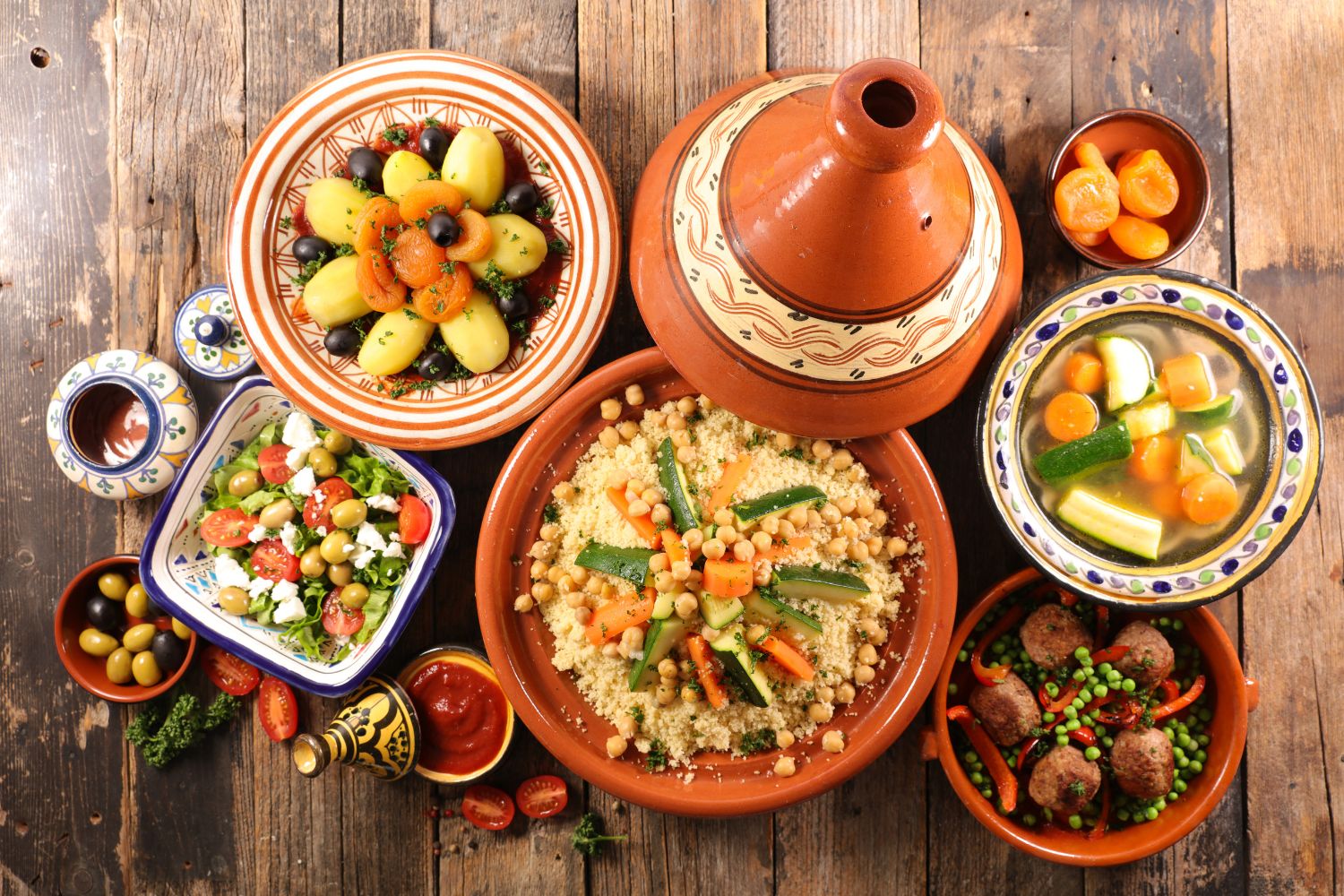
Moroccan cuisine has long been one of the most diversified cuisines in the world. This is a result of the centuries-long interaction of Morocco with the outside world.
The cuisine of Morocco is mainly Berber-Moorish, European, Mediterranean cuisines. The cuisine of Morocco is essentially Berber cuisine (sometimes referred to as the Moorish cuisine). It is also Influenced by Sephardic cuisine and by the Moriscos when they took refuge in Morocco after the Spanish Reconquista.
Spices are used extensively in Moroccan food. While spices have been imported to Morocco for thousands of years, many ingredients such as saffron from Tiliouine, mint, and olives from Meknes, and oranges and lemons from Fez, are home-grown. Chicken is the most widely-eaten meat in Morocco.
The most commonly eaten red meat in Morocco is beef; lamb is preferred but is relatively expensive. The main Moroccan dish most people are familiar with is couscous, the old national delicacy. Beef is the most commonly eaten red meat in Morocco, usually eaten in a Tagine with vegetables or legumes. Chicken is also very commonly used in Tagines, knowing that one of the most famous tagine is the Tagine of Chicken, potatoes, and olives. Lamb is also consumed, but as North African sheep breeds store most of their fat in their tails, Moroccan lamb does not have the pungent flavor that Western lamb and mutton have. Poultry is also very common, and the use of seafood is increasing in Moroccan food. Among the most famous Moroccan dishes are Couscous, Pastilla (also spelled Bsteeya or Bestilla), Tajine, Tanjia, and Harira.
Although the latter is a soup, it is considered as a dish in itself and is served as such or with dates especially during the month of Ramadan.
luxury desert camp
Merzouga Morocco
Merzouga is a small Moroccan town located in the Sahara Desert, near the Algerian border. Merzouga overlooks the Erg Chebbi, a vast expanse of sand dunes north of the town. To the west lies Dayet Srji, a seasonal salt lake that is often dry in summer.
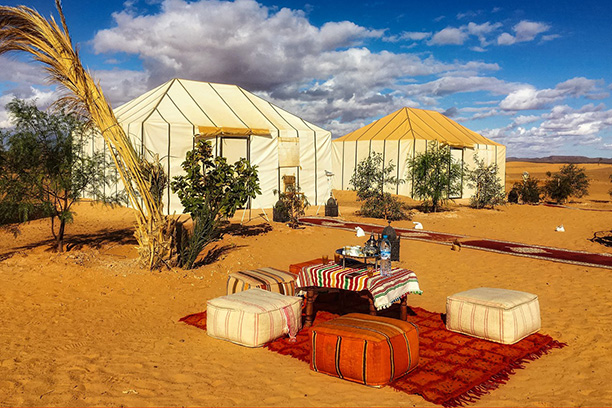
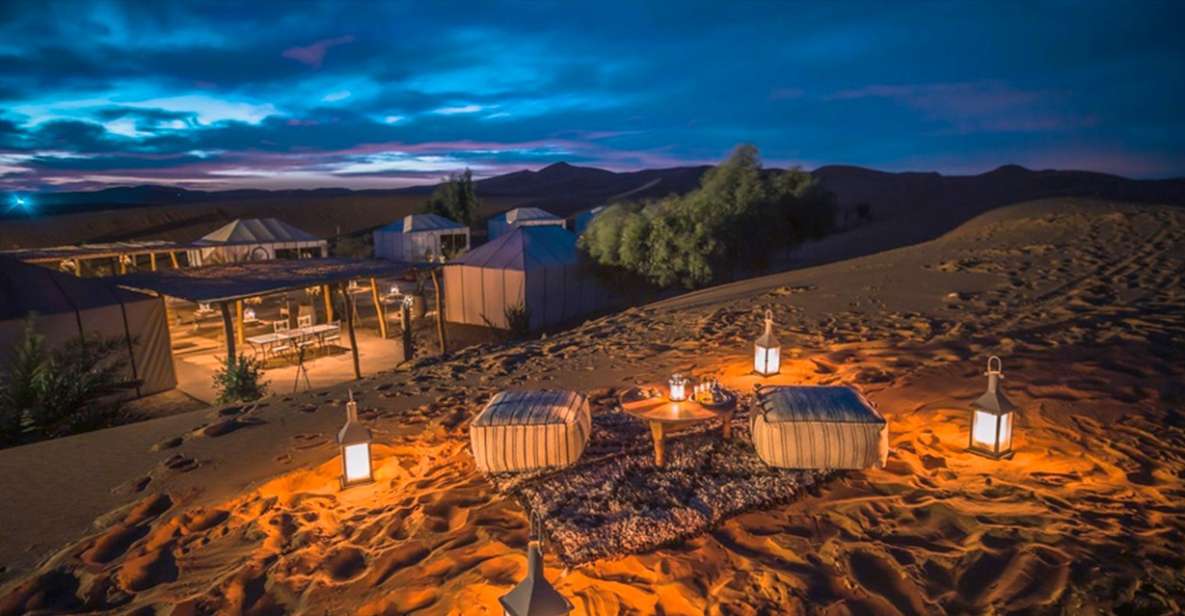

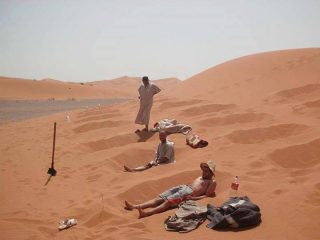
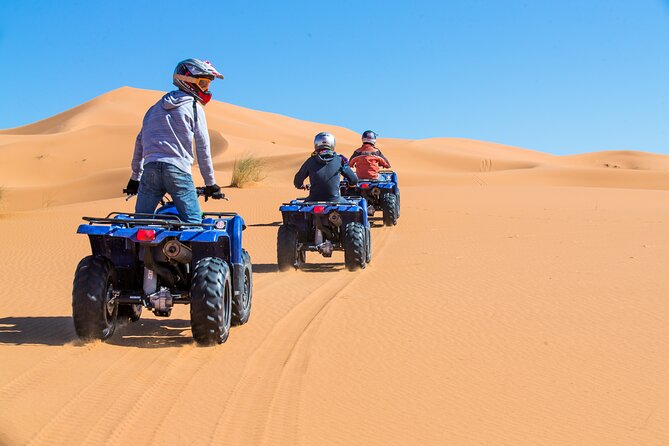
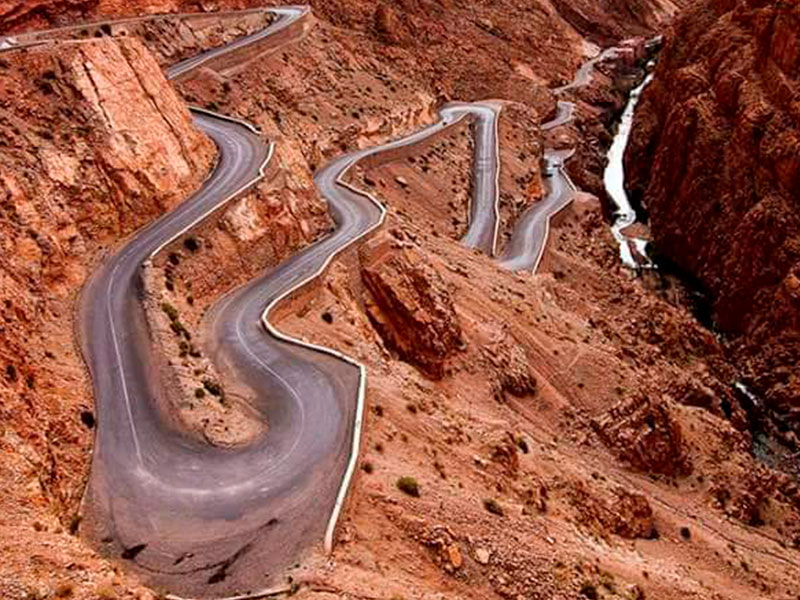
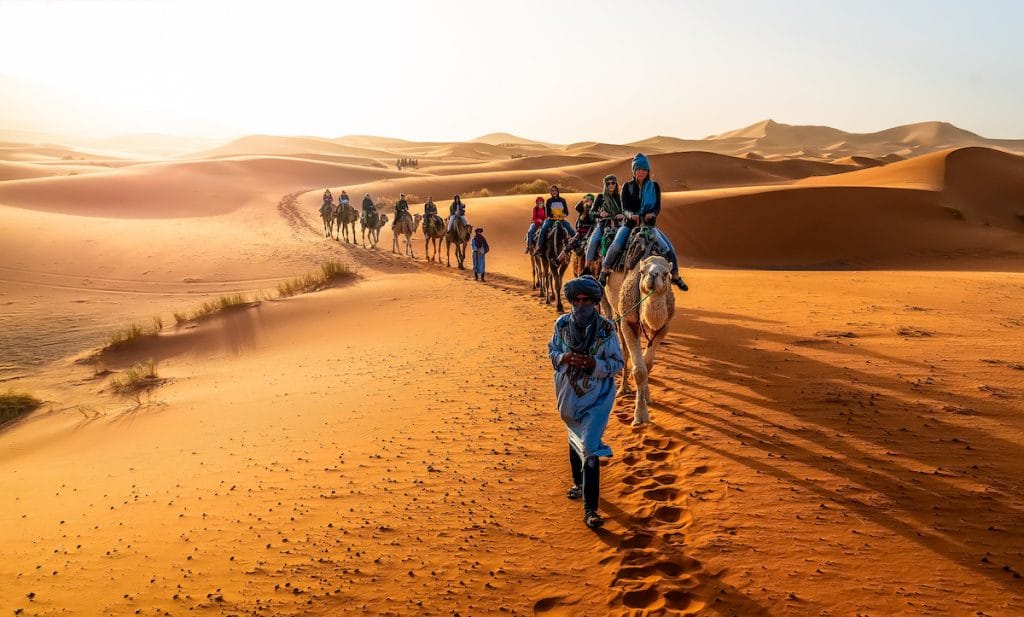


How to get to Merzouga from Marrakech
– How to get from Marrakech to Merzouga desert by bus
There are few direct buses from Marrakech to Merzouga (Supratour and CTM).
- Distance to Merzouga: 560 Km
- Duration: 13 hours
– How to get from Marrakech to Merzouga desert by car
You can rent a car in almost every bigger city in Morocco and you can drive to Merzouga.
- Distance to Merzouga: 560 Km
- Duration: 8-9 hours
Direction :
Marrakech – Tizi ‘ Tichka – Ouarzazatte – Dades – Tnghir – Erfoud – Rissani – Merzouga
Important :
Anytime you come to Merzouga, feel free to contact us, we will pick up you from Merzouga, Erfoud or Rissani and we manage your stay in the desert.
How to get to Merzouga from Fes
– How to get from Fes to Merzouga desert by bus
There is a direct bus from Fes to Merzouga (Supratour).
- Distance to Merzouga: 400 Km
- Duration: 8 hours
– How to get from Fes to to Merzouga desert by car
You can rent a car in almost every bigger city in Morocco and you can drive to Fes.
- Distance to Merzouga: 400 Km
- Duration: 6 hours
Direction :
Fes – Azrou – Midelt – Errachidia – Erfoud – Rissani – Merzouga
Important :
Anytime you come to Merzouvga, feel free to contact us,we will pick up you from Merzouga, Erfoud or Rissani and we manage your stay in desert.
We drive to explore to the tiny villages around Erg Chebbi dunes such as Hassi Labied, Merzouga and Khamlia. Near Merzouga,you will have the chance to see Dayet Srji lake that forms in spring time which attracts flocks of pink flamingos and wildlife. On our way to Kamlia we expect to meet locals showing their desert foxes.
Khamlia, is known as the village of black people who were slaves coming from Sudan you will be hospitably welcomed with a cup of tea (Whiskey Berber) while enjoying their spiritual Gnawa music. Our next stop is on the panoramic view of golden dunes near the Algerian border. We will visit a Nomad family, who are living under Berber tent and who are taking care for herd of cattle, goats and camels. You will have the chance to visit the sites of black volcanic rocks.
